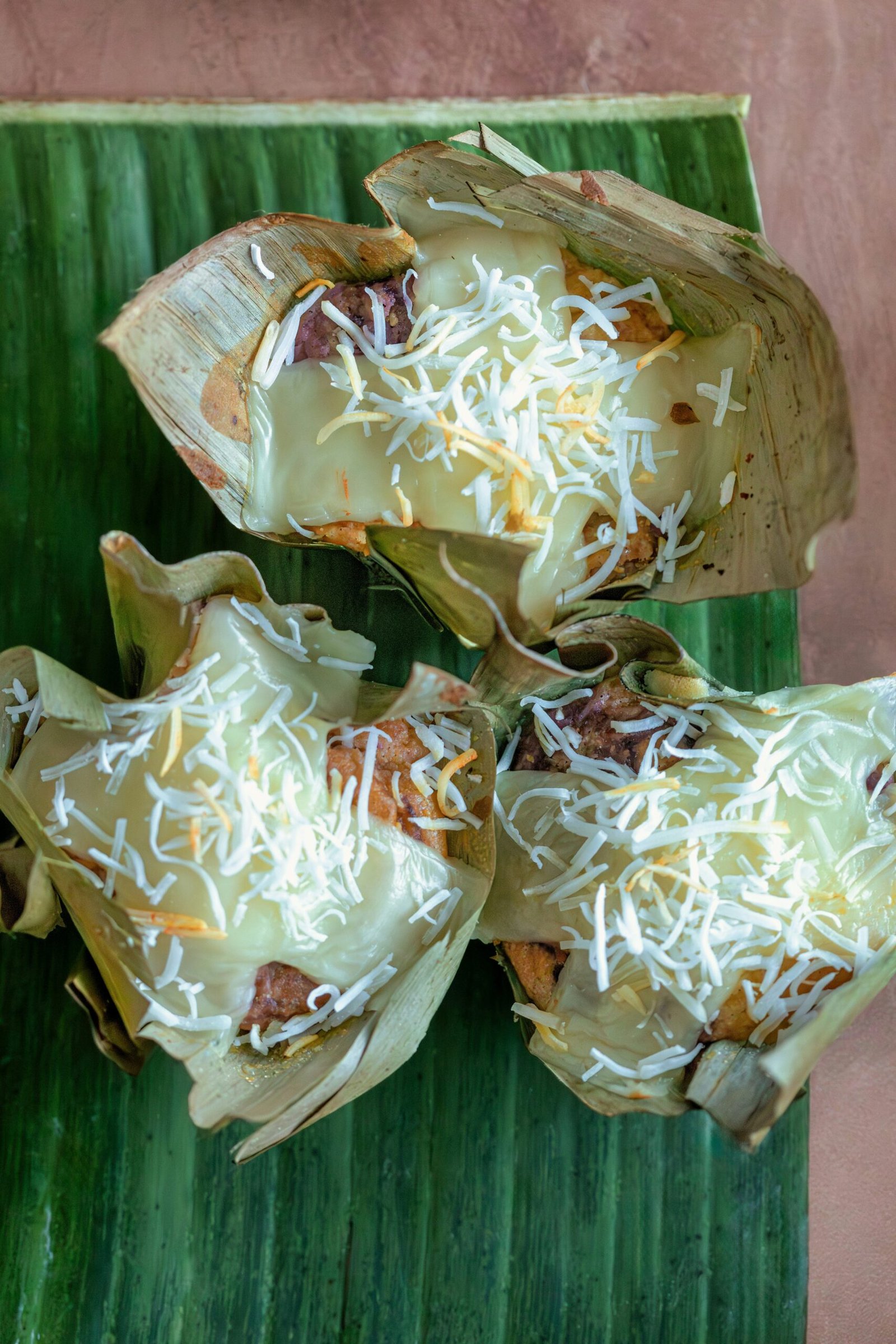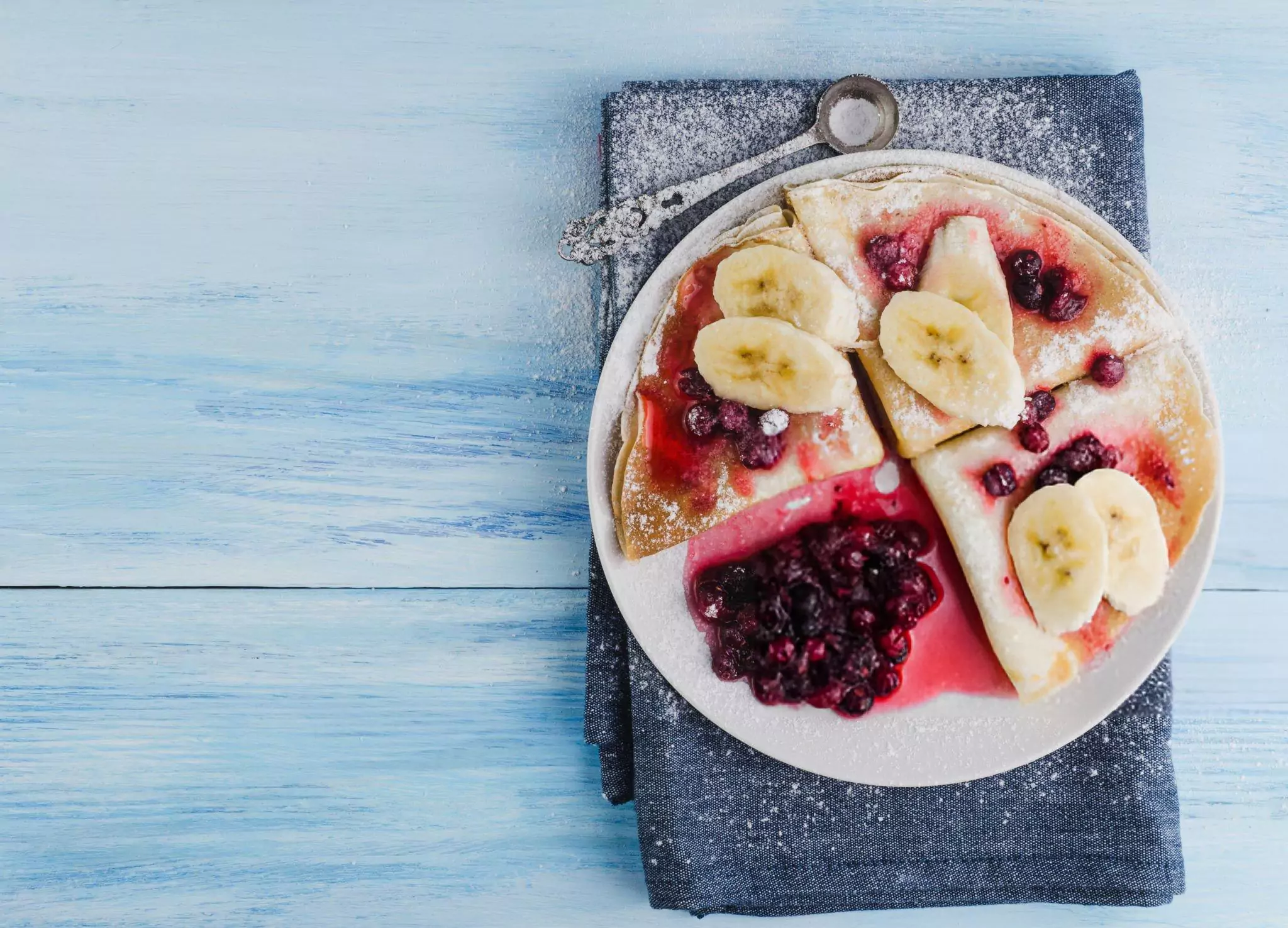Introduction to One-Pot Cooking
One-pot cooking has emerged as a convenient solution for those seeking to simplify their weeknight dinner routines. This method encompasses the preparation of a complete meal in a single pot, which inherently offers numerous advantages for busy individuals and families alike. By minimizing the number of dishes required during preparation, one-pot meals significantly reduce the time spent on cleanup, allowing for more relaxed evenings and less time in the kitchen.
In addition to promoting ease of cooking, one-pot recipes are designed to foster nutrition and flavor. These meals often combine a variety of food groups, such as protein, grains, and vegetables, ensuring that nutrition is not compromised in favor of convenience. With the ability to easily control ingredients, home cooks can tailor their dishes according to dietary preferences or restrictions, making it an adaptable option for a diverse household.
The time-saving aspect of one-pot cooking cannot be overstated. With only one vessel to monitor, meal prep becomes streamlined, which is particularly beneficial after a long day at work. Shopping for ingredients can also be more efficient, as many one-pot recipes utilize staples that are often already available in the pantry. This reduces the likelihood of needing to make last-minute grocery runs, enabling families to spend more quality time together during their evenings.
Having a collection of simple, delicious one-pot recipes at one’s disposal can serve as a reliable resource for balmy weeknights. Whether it is a hearty stew, a comforting pasta dish, or a colorful stir-fry, the versatility of one-pot meals offers something for everyone. Consequently, one-pot cooking not only delivers meals that satisfy the palate but also enhances the overall dining experience by fostering convenience and creativity in meal preparation.
Benefits of One-Pot Meals
One-pot meals have gained popularity in recent years, particularly among busy families and professionals seeking efficient and delicious dining solutions. One of the primary benefits of these meals is the significant convenience they offer regarding preparation and cleanup. With traditional cooking methods, multiple pots, pans, and utensils are often needed, which can lead to a daunting pile of dishes. In contrast, one-pot meals streamline the cooking process, allowing all ingredients to be cooked in a single vessel, reducing both the required cooking time and the post-meal cleanup effort.
Moreover, one-pot recipes are renowned for their ability to build flavors through thoughtful ingredient layering. By adding ingredients sequentially, cooks can ensure that each component infuses the dish with its unique taste, resulting in a harmonious blend of flavors. For instance, starting with aromatics such as onions and garlic lays a flavorful foundation, while meat and vegetables added later can absorb those initial flavors, culminating in a richly flavored dish. This layering effect is particularly advantageous as it enables the utilization of spices and herbs, creating a more complex and satisfying meal.
One-pot meals also exhibit remarkable adaptability, making them suitable for various dietary preferences. Vegetarians can incorporate legumes and vegetables, while meat lovers can easily add their protein of choice. Additionally, one-pot recipes can accommodate gluten-free, dairy-free, and low-carb diets with minimal adjustment. This versatility not only caters to individual preferences but also allows families to experiment with different ingredients, expanding their palates and cooking skills.
Lastly, preparing one-pot meals can encourage family bonding as it often involves collaborative cooking experiences. Families can engage in the preparation process, sharing tasks like chopping vegetables or stirring the pot while enjoying camaraderie. This not only strengthens relationships but also instills valuable culinary skills and encourages healthy eating habits.
Essential Equipment for One-Pot Cooking
Successfully executing one-pot recipes requires the right kitchen equipment, which is paramount for ensuring an efficient and hassle-free cooking experience. At the heart of one-pot cooking is a high-quality pot or pan, particularly designed to handle various cooking techniques such as sautéing, simmering, and baking. A heavy-bottomed Dutch oven is often recommended because it offers even heat distribution, preventing food from burning or sticking. This versatile piece can transition from stovetop to oven, making it ideal for a wide range of dishes.
Another essential item is a good-quality stockpot. When preparing one-pot meals that involve soups or stews, a stockpot allows for ample space to accommodate all ingredients along with sufficient liquid. Opt for pots with sturdy handles for ease in lifting and moving, especially when dealing with heavy contents.
Utensils designed specifically for one-pot cooking are equally important. A wooden spoon or silicone spatula can be beneficial in preventing scratches on non-stick surfaces and is gentle enough for stirring various ingredients without fear of damage. Additionally, having a set of measuring cups and spoons is useful for accurately gauging ingredients, which is crucial in one-pot recipes.
Consider investing in an electric pressure cooker or slow cooker, which can further simplify your cooking process. These appliances offer versatility, allowing you to prepare meals effortlessly while saving time. Furthermore, they often come with preset functions that help in achieving perfectly cooked meals.
Finally, maintaining your equipment is vital for longevity. Regularly clean your pots and pans with gentle soaps and avoid abrasive scrubbers that could cause scratches. For items made of cast iron, ensure they are seasoned regularly to maintain their non-stick properties and prevent rust. Proper care guarantees that your cooking equipment remains in excellent condition for your future culinary adventures.
Ingredients to Keep on Hand
When it comes to preparing easy one-pot meals, having a well-stocked pantry and fridge can make all the difference. The goal is to ensure that you have versatile ingredients readily available, allowing you to create hassle-free weeknight dinners regardless of the time constraints or unexpected guests. The foundation of these meals typically lies in a balanced selection of proteins, grains, vegetables, and spices.
Starting with proteins, consider options like chicken, ground turkey, beans, or lentils. These ingredients are not only rich in nutrients but also adapt well to various cuisines. For instance, chicken can be prepared in a myriad of styles, from curry to stir-fry, while beans and lentils provide a hearty base for vegetarian dishes. Meanwhile, grains such as rice, quinoa, or couscous serve as excellent companions, absorbing flavors and adding texture to your one-pot creations. Incorporating whole grains whenever possible can also enhance the nutritional profile of your meals.
Next, the selection of vegetables should embrace seasonal and frozen options. Fresh produce contributes flavor and color, while frozen vegetables offer convenience and long shelf life. Favorites like spinach, bell peppers, and zucchini not only provide essential nutrients but also lend themselves to various flavor profiles. Additionally, having a supply of staple spices—like garlic powder, paprika, and cumin—can elevate the taste and complexity of any dish, adding an extra dimension to your cooking.
Finally, maintaining a selection of pantry staples such as canned tomatoes, vegetable broth, and olive oil will give you a broader range of cooking possibilities. By customizing your recipes based on the seasonal availability of ingredients, you can ensure that your meals remain fresh and exciting. Emphasizing these key elements will make your journey into hassle-free weeknight dinners much easier and more enjoyable.
One-Pot Chicken and Rice
This hearty dish is a favorite for its simplicity and comforting flavors. With succulent chicken cooked alongside tender rice, it is a complete meal in itself.
Key Ingredients: 4 chicken thighs, 1 cup long-grain rice, 2 cups chicken broth, 1 onion (diced), 2 cloves garlic (minced), and spices (paprika, salt, pepper).
Cooking Instructions: In a large pot, sauté the onion and garlic until fragrant. Add the chicken thighs, cooking until browned on both sides. Stir in the rice and spices, followed by the chicken broth. Cover and simmer for 20 minutes or until the rice is fluffy and the chicken is cooked through.
Vegetarian Chili
This vibrant chili packs a punch with its spices and rich textures, suitable for vegetarians and meat lovers alike. It’s a perfect dish for those seeking a healthy, protein-rich meal.
Key Ingredients: 1 can black beans, 1 can kidney beans, 1 bell pepper, 1 onion, 2 cans diced tomatoes, and chili powder.
Cooking Instructions: In a large pot, sauté the onion and bell pepper until softened. Add the diced tomatoes and spices, simmering for 10 minutes. Stir in both cans of beans, cooking for an additional 15 minutes on low heat.
One-Pot Pasta Primavera
This colorful pasta dish is not only visually appealing but also full of seasonal vegetables, making it a light yet filling option for dinner.
Key Ingredients: 8 oz spaghetti, 2 cups mixed vegetables (zucchini, bell pepper, peas), 2 cups vegetable broth, and Italian seasoning.
Cooking Instructions: Place all ingredients in a pot and bring to a boil. Reduce heat, cover, and simmer for about 12 minutes until pasta is tender and vegetables are cooked. Stir occasionally to prevent sticking.
Beef Stroganoff
This classic Russian dish showcases tender beef and creamy sauce, served over comforting noodles—a non-complicated, savory meal that appeals to many.
Key Ingredients: 1 lb beef strips, 1 onion, 2 cups mushrooms, 2 cups beef broth, and sour cream.
Cooking Instructions: Sauté the onion and mushrooms until softened. Add beef strips, cooking until browned. Pour in the beef broth and simmer for 10 minutes. Finally, stir in sour cream just before serving.
Curried Lentil Soup
This nutritious soup combines lentils with aromatic spices, making it not only wholesome but also delightfully flavorful—perfect for a cozy weeknight meal.
Key Ingredients: 1 cup lentils, 1 onion, 2 carrots, coconut milk, and curry powder.
Cooking Instructions: In a pot, sauté the onion and carrots until soft. Add lentils, curry powder, and 4 cups of water. Bring to a boil, then reduce heat and simmer for 30 minutes. Stir in coconut milk before serving.
Tips for Making One-Pot Meals Flavorful
Creating flavorful one-pot meals is an art that balances seasoning, ingredient selection, and preparation techniques. To achieve depth in your dishes, start with a solid foundation by utilizing aromatics such as onions, garlic, and ginger. Sautéing these ingredients at the beginning not only enhances their natural flavors but also contributes to a rich base for your meal. When building layers of taste, consider adding spices and herbs progressively, incorporating them at different stages of cooking to allow their flavors to bloom effectively.
Another essential tip is to layer your ingredients thoughtfully. Start by browning proteins in the pot to develop a savory crust, which adds complexity. Once the proteins are seared, remove them temporarily and add vegetables to the pot. This method allows the vegetables to soak in the meat juices, enriching their flavors before reintroducing the proteins back into the mix. For an added boost, consider adding a splash of acid, such as lemon juice or vinegar, towards the end of cooking. This adjustment brightens the overall taste and balances out rich flavors.
Achieving the right consistency between liquids and solids in your one-pot dishes is vital. Too much liquid can lead to a soupy texture, while too little can result in burnt food. It’s advisable to start with a specific ratio, usually one part liquid to two parts solids, adjusting as necessary. For grains and pasta, remember that they will absorb some liquid during cooking; thus, make sure your pot remains adequately balanced throughout the process. Additionally, avoiding the common pitfalls of overcooking vegetables or under-seasoning can significantly elevate your one-pot meals. By following these techniques, you can create delicious, satisfying dishes that are bursting with flavor while keeping preparation and cleanup methods straightforward.
Troubleshooting Common One-Pot Cooking Issues
One-pot cooking can simplify meal preparation, but it is not without its challenges. Several common issues may arise, including burning, overcooking, and uneven textures. Understanding these problems and their solutions is essential for achieving delicious results in your one-pot meals.
Burning is a frequent concern when cooking with one pot. This typically occurs due to high heat or insufficient liquid. To prevent burning, it is crucial to maintain a steady temperature and monitor the dish closely. Consider using a heavy-bottomed pot to promote even heat distribution. Additionally, ensure that there is enough liquid in the pot to create steam, which helps cook ingredients evenly and reduces the likelihood of sticking to the bottom. If burning does occur, it is advisable to immediately remove the pot from the heat and transfer any unburned food to another container before further cooking.
Overcooking is another common issue that can affect the outcome of your one-pot recipes. Ingredients vary in cooking times; for example, potatoes may take longer to cook than leafy greens. To mitigate overcooking, add ingredients in stages, starting with those that require longer cooking times. This ensures that delicate items are added later in the process and retain their texture and flavor. Alternatively, utilizing the simmer method helps control cooking times while allowing flavors to meld without sacrificing the integrity of individual components.
Uneven textures can diminish the appeal of a dish. This often results from unevenly chopped ingredients or incorrect layering of food in the pot. To promote uniform cooking, it is best to cut all ingredients into similar sizes. Furthermore, layering ingredients appropriately—placing denser items at the bottom and lighter elements on top—can enhance the texture and overall quality of the finished dish. Addressing these common one-pot cooking issues will help ensure your weeknight dinners are both hassle-free and satisfying.
Storing and Reheating One-Pot Meals
Effective storage and reheating techniques play a crucial role in preserving the taste and texture of one-pot meals. After preparing a delicious one-pot recipe, it is essential to follow best practices for storing leftovers to ensure food safety and maintain quality. First, it is important to cool the meal promptly. Allow the dish to reach room temperature before refrigerating it, as this can help prevent bacterial growth. Ideally, the cooling process should be completed within two hours after cooking.
When it comes to storage, selecting the right containers is vital. Airtight containers made of glass or BPA-free plastic are recommended. They not only help maintain freshness but also minimize the risk of absorbing odors from other foods in the refrigerator. Divide larger meals into smaller, meal-sized portions for easy access during the week and to facilitate quicker reheating.
Labeling containers with dates is another critical practice. This helps in tracking the freshness of your one-pot meals. Generally, most cooked dishes can be stored in the refrigerator for up to four days. For extended storage, consider freezing portions. When freezing, it is wise to leave some space in the containers, as liquids tend to expand when frozen.
Reheating one-pot meals can be done using various methods. The stovetop is often preferred, as it allows for more even heating and retains the dish’s original flavor. Alternatively, a microwave may be used for convenience, but it is essential to cover the meal with a microwave-safe lid to prevent splatters and to ensure moisture retention. Stirring the meal midway through reheating can also help achieve consistent temperature without overcooking.
By following these guidelines for storing and reheating one-pot meals, you can enjoy your culinary creations throughout the week, saving time and effort while still savoring delicious flavors.
Conclusion and Encouragement to Try New Recipes
In essence, one-pot cooking offers a myriad of benefits that can transform weeknight dinners into effortless culinary experiences. By simplifying the cooking process, it not only saves time but also allows for a more organized kitchen. The minimalist approach to preparation and cleanup is especially advantageous for those with busy schedules, making it a practical choice for families and individuals alike. One-pot recipes result in rich flavors as ingredients mingle during the cooking process, often yielding results that are both satisfying and delightful.
As you venture into the realm of one-pot cooking, consider experimenting with various recipes and flavors. The beauty of this style lies in its flexibility; feel free to add your personal touch to existing recipes or create entirely new ones using ingredients you have on hand. From hearty stews to vibrant risottos, the possibilities are endless. This method encourages creativity, allowing you to explore diverse cuisines and introduce exciting meals to your dining table.
Moreover, engaging with a community of fellow culinary enthusiasts can enhance your one-pot cooking journey. Sharing your experiences, insights, and even the challenges faced while trying new recipes fosters a supportive environment. Not only does this exchange of ideas inspire innovation, but it also provides a sense of belonging among those who appreciate the simplicity and satisfaction of one-pot meals. We invite you to share your own one-pot creations and the flavors that resonate with you, encouraging others to embark on the same journey and discover the joys of hassle-free weeknight dinners.











